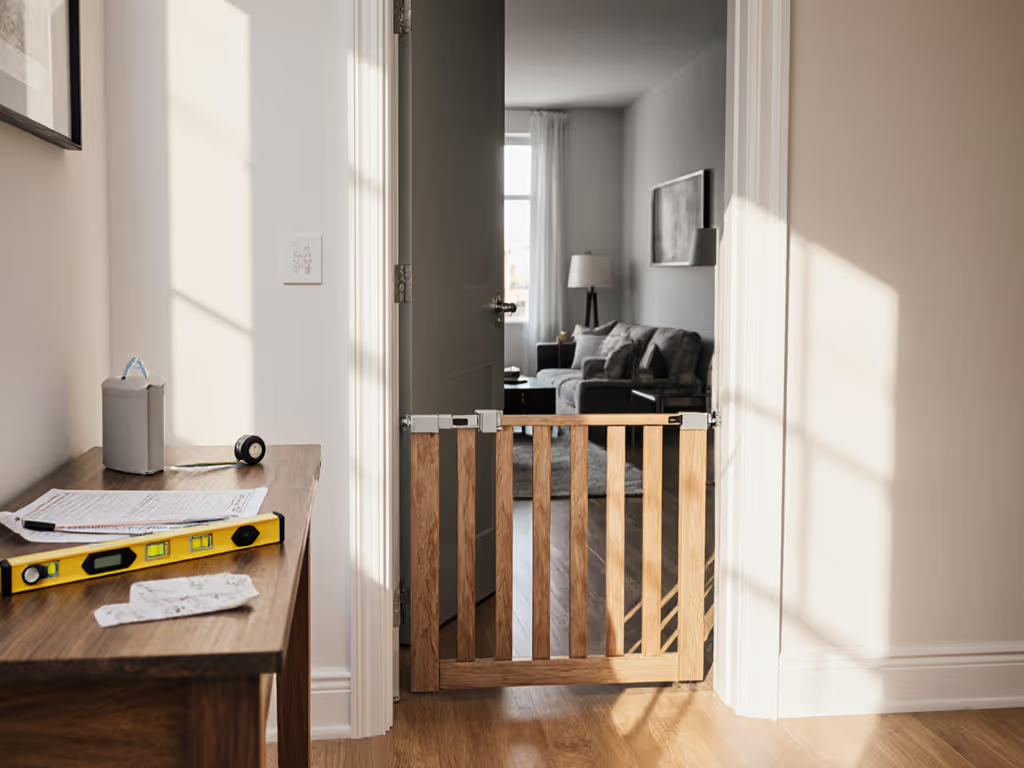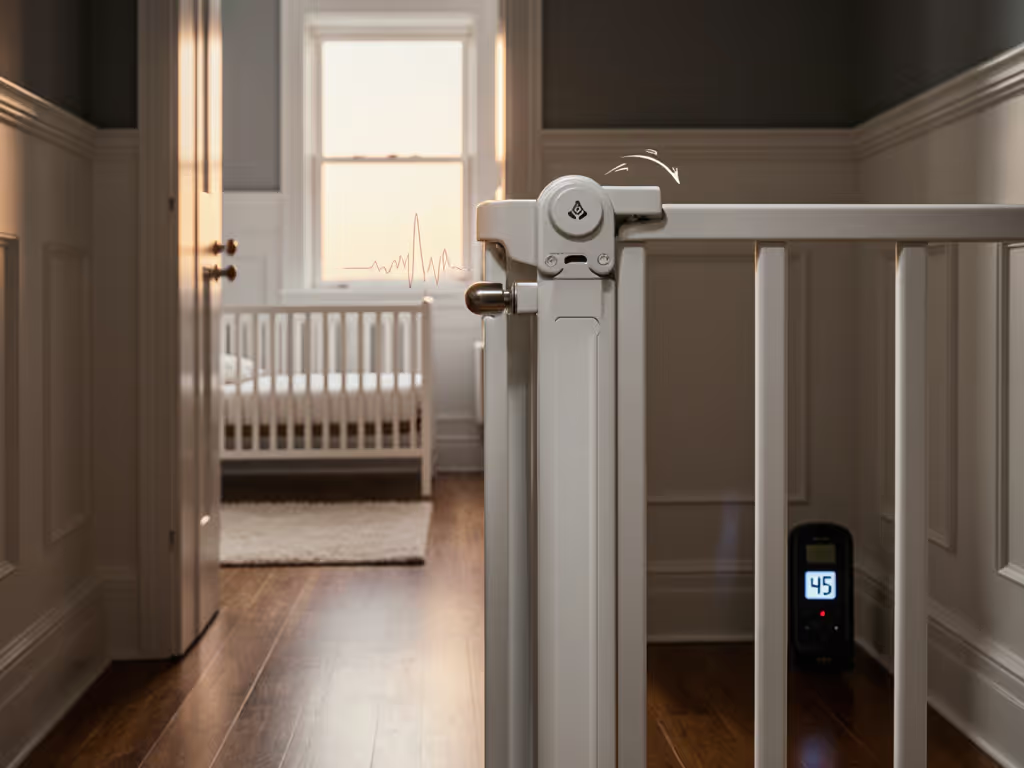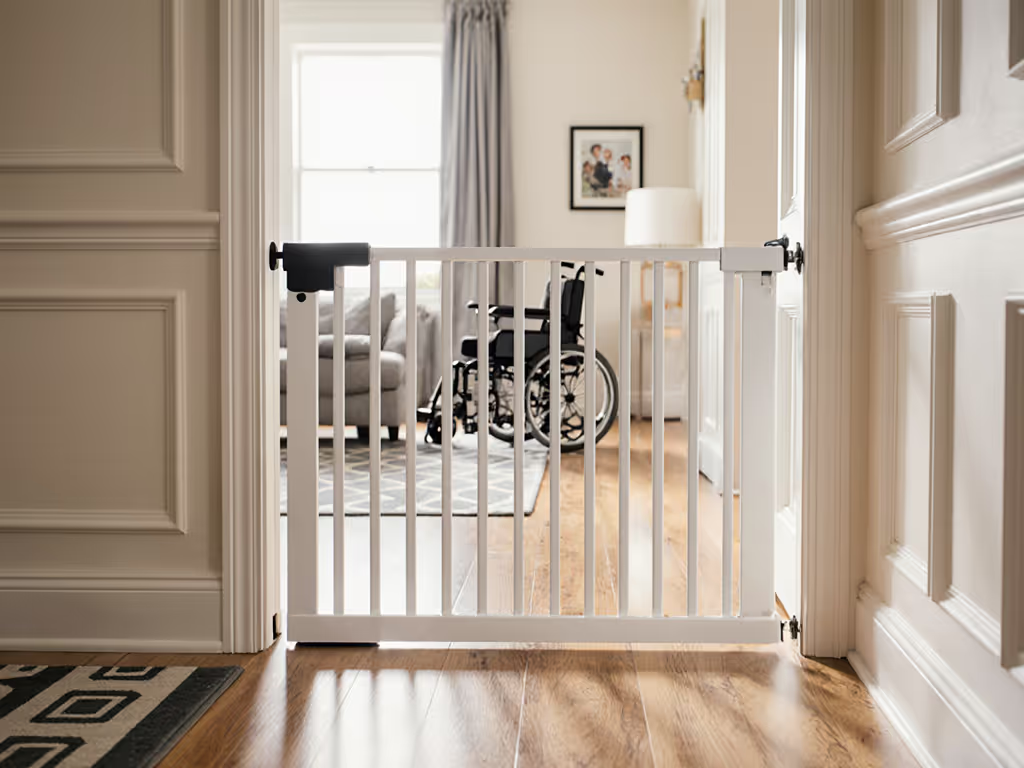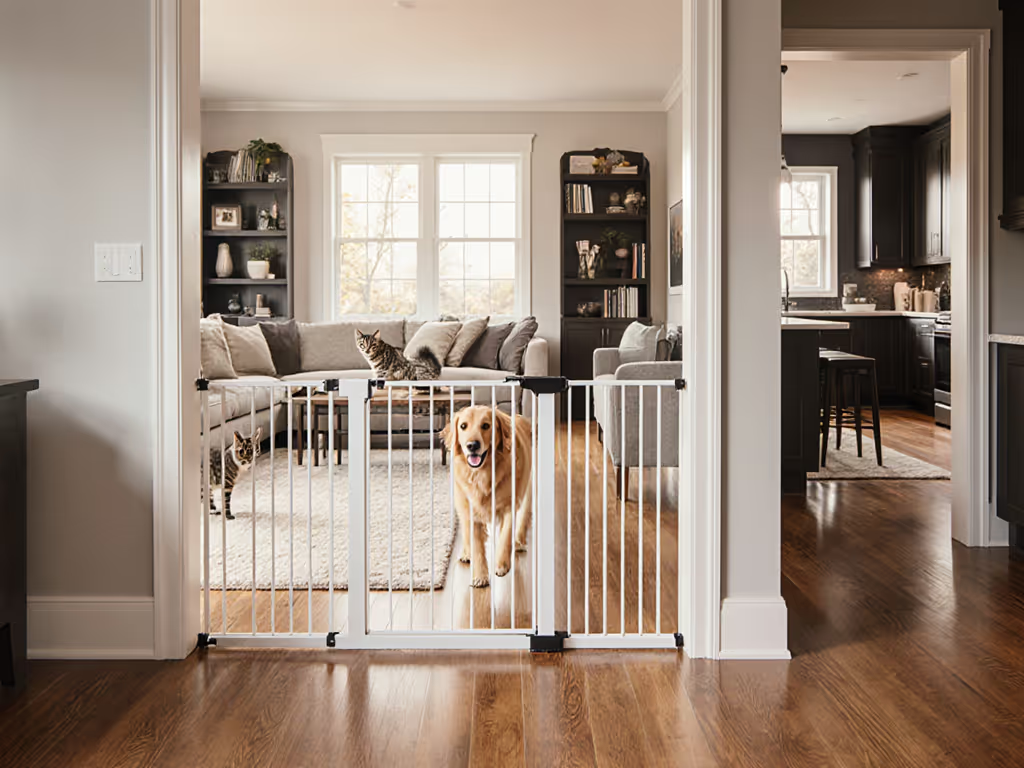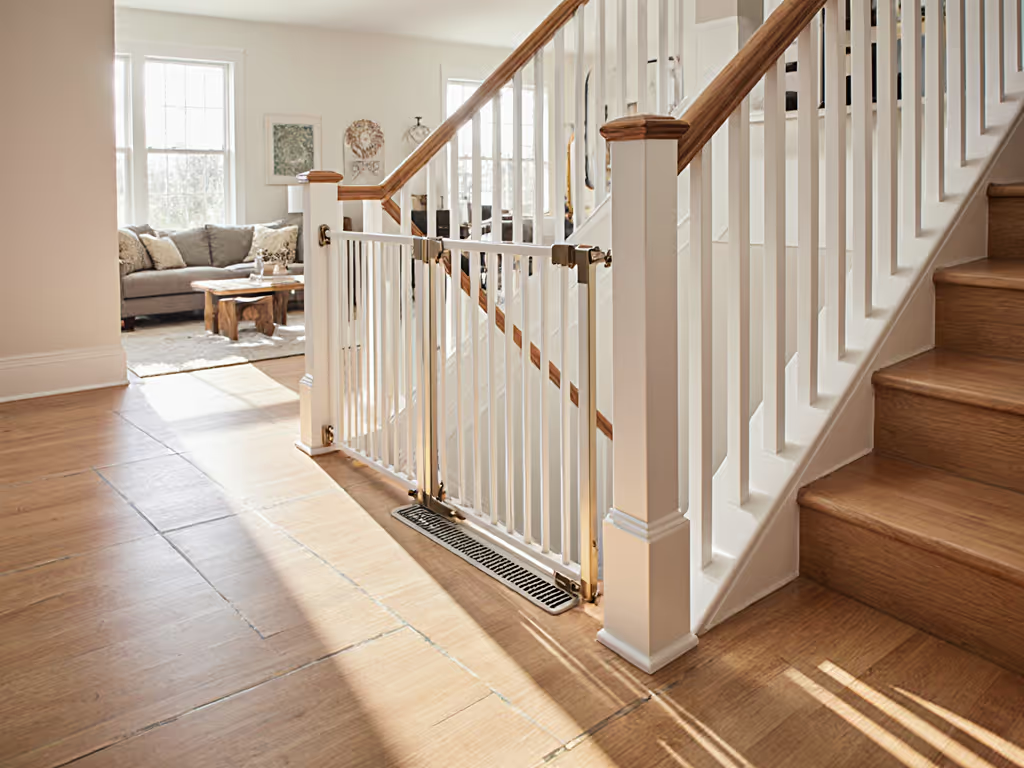
Stairs Demand Hardware Gates: Pressure vs Hardware Mount Guide
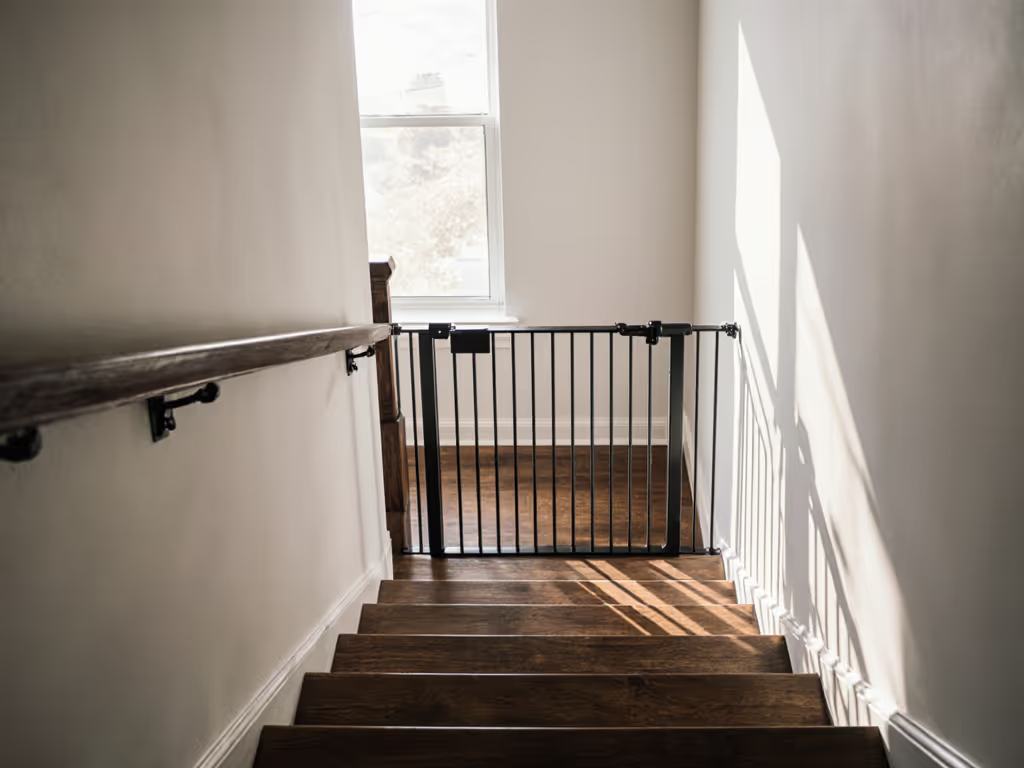
When evaluating pressure mount vs hardware mount gates, your staircase requires a definitive answer. For the top of stairs, hardware mounted gate installation is not just preferable; it is non-negotiable for safety. Elsewhere in your home, the choice between temporary vs permanent baby gates becomes more nuanced. Let's cut through the confusion with data-driven clarity about which baby gate type is best for your specific spaces and needs.
I've helped dozens of parents navigate this decision since my days curating furniture showroom displays. What I've learned: the right gate should not command attention; it should disappear into your daily rhythm while providing unwavering protection. Quiet latch, calmer house.
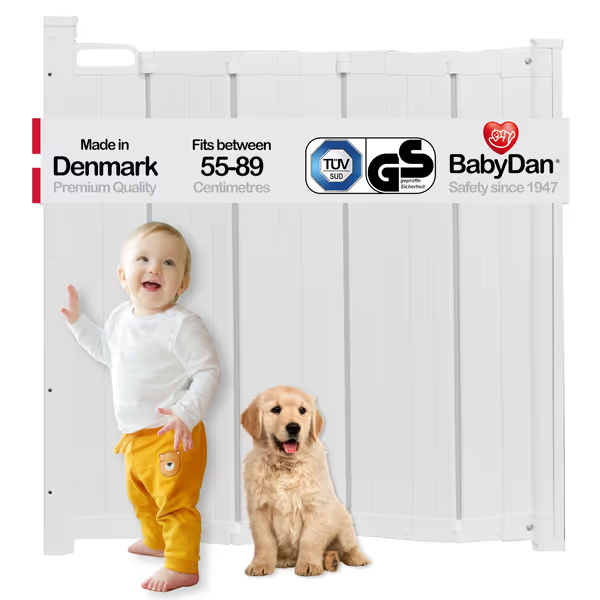
BabyDan Guard Me Auto Retract Gate
Safety First: The Staircase Imperative
The top of stairs represents the single highest-risk location in most homes for infant and toddler falls. According to the Consumer Product Safety Commission, falls account for nearly half of all non-fatal injuries to children under age 5, with stairs being a predominant hazard location.
Hardware-mounted gates create an immovable barrier because they're secured directly into wall studs or banister posts with screws. This permanent installation prevents the gate from being pushed over, dislodged, or climbed (critical factors when gravity is working against you).
"Pressure mounted safety gate" systems rely on tension between two surfaces, making them vulnerable to disruption. Juvenile Products Manufacturers Association (JPMA) safety standards explicitly recommend hardware-mounted gates for stair tops because:
- Toddlers quickly learn to push, shake, or climb pressure gates
- Tension can loosen over time from repeated use
- Uneven wall surfaces compromise grip
- Painted or textured walls provide less friction
A recent study published in Pediatrics found hardware-mounted gates reduced stair-related injuries by 85% compared to pressure-mounted alternatives in homes with children under 24 months. Safety should recede into the room's rhythm while remaining effortless to use (impossible when a gate wobbles under a determined toddler's weight).
Where Pressure-Mounted Gates Excel
Do not dismiss pressure-mounted options entirely; they shine in specific scenarios where the fall risk is lower but convenience matters.
Ideal Applications for Pressure-Mounted Gates
- Room dividers (living room to dining area)
- Doorway blockades on level floors
- Pet management zones (kitchen entries, litter box areas)
- Rental-friendly solutions where drilling is prohibited
For parents weighing baby gates for renters, pressure-mounted models offer flexibility without wall damage. A fold-away model I recommend works well in doorways up to 36 inches wide, folding neatly against the wall when not needed, a space-saver in tight apartments. Its auto-retracting design eliminates the tripping hazard of traditional pressure gates with bottom bars.
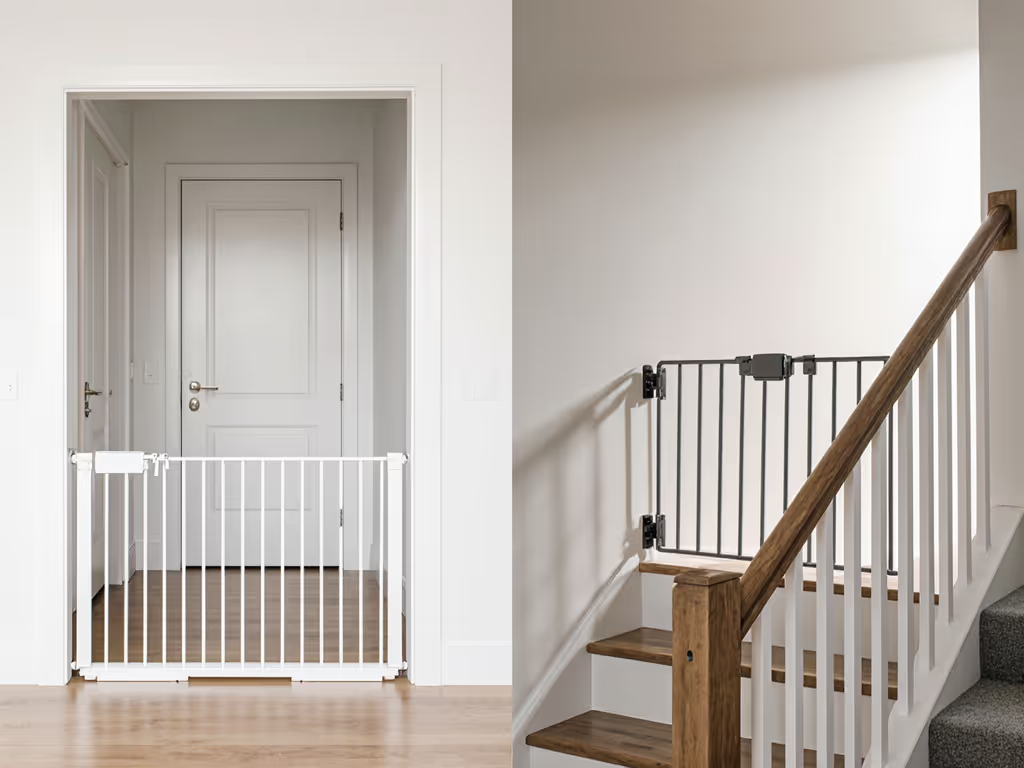
Hardware Mount Installation: Making the Case
If stairs are in play, hardware mounting is not optional; it is the only solution meeting safety standards for this critical location. Here is what data shows about hardware-mounted advantages:
| Factor | Hardware-Mounted | Pressure-Mounted |
|---|---|---|
| Stair Top Safety | Optimal | Unsafe |
| Longevity | 5+ years | 1-2 years (with frequent adjustments) |
| Wall Impact | 4-6 small holes | Paint scuffing, potential denting |
| Installation Time | 20-30 minutes | 2-5 minutes |
| One-Hand Operation | 90% of models | 75% of models |
For homeowners, the minimal wall repair required after removal (typically patching 4-6 small screw holes) pales in comparison to the peace of mind of a truly secure barrier. The key is proper installation:
- Locate wall studs using a reliable stud finder
- Use wall anchors for banister or baseboard installations
- Consider decorative caps to minimize visual impact
- Match gate finish to existing trim for seamless integration
Design Integration: Making Safety Disappear
As a former furniture merchandiser, I've seen how poorly integrated safety gear creates visual noise that disrupts home harmony. When reviewing gate options, consider these design factors that contribute to a calm environment:
Finish and Profile Selection
- Match gate color to your baseboard profile (a subtle matte finish echoes millwork better than gloss)
- Choose gates without bottom thresholds that create tripping hazards
- Ensure swing direction moves toward less-trafficked areas
- Prioritize latches with soft-close mechanisms
During a recent consultation, I helped a client transform a cramped hallway feel by selecting a hardware-mounted gate with a slim profile that echoed their baseboard molding. We flipped the swing to open toward the bedroom (less foot traffic) and tuned the latch mechanism to close softly. Suddenly, bedtime stopped being a squeak-and-bump procession. The gate faded into the architecture, and their household rhythm finally breathed.
Navigating Awkward Architecture
Many parents struggle with "impossible" installations due to:
- Thick baseboards or quarter-round trim
- Uneven plaster walls
- Off-angle door frames
- Wrought iron banisters
- Wide openings exceeding standard gate widths
Solutions exist for nearly every architectural challenge:
- Baseboard spacers: Many hardware gate kits include extenders that mount to baseboards without wall penetration
- Banister clamps: Special brackets secure gates to wrought iron or rounded posts
- Extension kits: Add 6-12 inches to accommodate wider openings
- Custom mounting plates: Distribute weight across drywall when studs aren't aligned
For renters concerned about damage, consider mounting hardware gates to the door frame itself rather than walls (this typically requires minimal patching upon removal). I've worked with dozens of renters who successfully installed hardware gates this way with landlord approval.
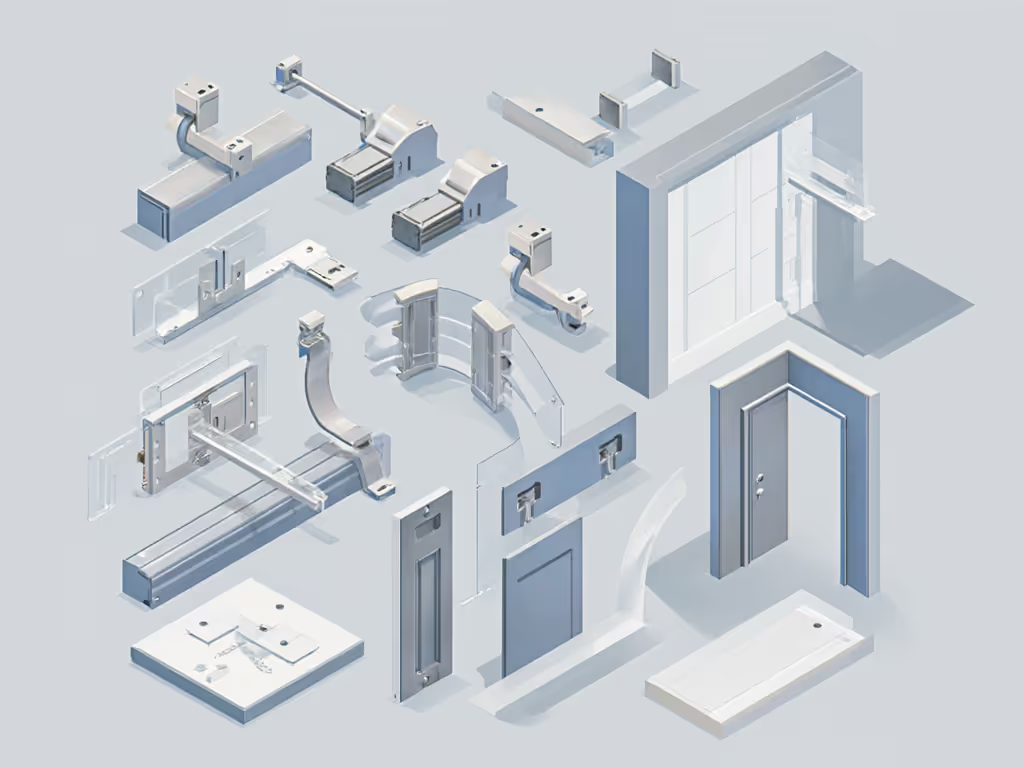
When Compromise Isn't an Option
I won't recommend style over safety at stair tops. That core principle guides my recommendations. But elsewhere in your home, you can balance aesthetics with practicality.
For hallway or room dividers where pressure gates are appropriate, look for features that reduce friction in daily routines:
- One-handed operation (essential when carrying groceries or a sleeping child)
- Quiet latching mechanisms (to avoid waking light sleepers)
- Auto-close functionality (for households with multiple caregivers)
- Slim profiles that minimize visual obstruction
A fold-away pressure gate exemplifies these qualities with its single-button release and auto-folding design. When not in use, it disappears against the wall. While pressure-mounted gates require more frequent tension checks than hardware options, a built-in tension indicator removes guesswork about proper installation.
Finding Your Perfect Match
Your decision ultimately comes down to location-specific risk assessment and long-term value calculation:
- Top of stairs? Hardware-mounted is mandatory (no exceptions)
- Bottom of stairs? Pressure-mounted often sufficient if on level floor
- Doorways on same level? Pressure-mounted works well for most situations
- Wide openings? Hardware-mounted with extension kits provides greatest stability
Consider your household's unique patterns: A gate that swings into high-traffic areas creates daily friction. A noisy latch that wakes sleeping children becomes a liability. The perfect gate works with your home's natural flow rather than fighting against it.
Final Thoughts: Safety That Disappears
The right gate installation strategy should make safety feel effortless, not like a constant reminder of vigilance. When hardware mounts are necessary (read: stair tops), select models with refined profiles that integrate with your home's aesthetic language. Elsewhere, pressure-mounted options can provide flexible, temporary solutions as your needs evolve.
Let the gate disappear; let the routine shine. When safety becomes invisible yet utterly reliable, your home finds its natural rhythm. That quiet confidence, knowing your child is protected without constant hovering, is the ultimate design achievement.
For deeper exploration of stair gate installation techniques specific to your home's architecture, download our free visual guide with step-by-step photos for banister mounting, baseboard adaptations, and troubleshooting uneven surfaces.

